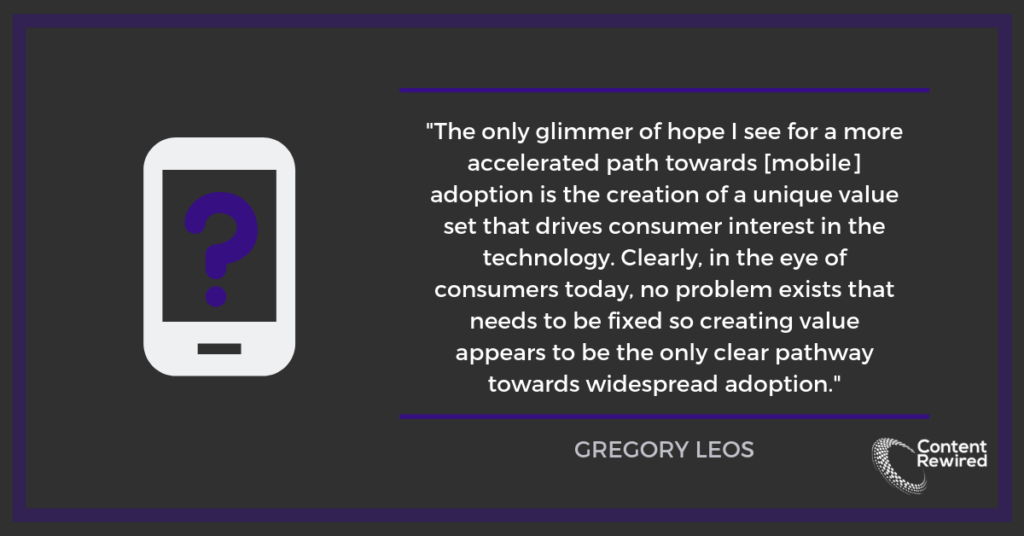Last Updated on August 3, 2023 by admin

As we move into 2020, questions remain around the state of payments both in the U.S. and abroad. Innovation and disruptive changes have ushered in a transition period from traditional to digital, but both businesses and consumers are waiting to see how some of these changes will shake out. Consolidation was the name of the game in 2019 — and may continue to steal headlines in 2020. I spoke to the experts to uncover thoughts and predictions for the payments landscape in the coming year.
This is the fourth in a series of Payments & Fintech Q&A articles featuring thought leaders in the space (You can view the first here, the second here, and the third here). Gregory Leos is the Senior Vice President, Business Banking Executive at Bank of America Merchant Services, a role that he has held since January 2016. In this role, he is responsible for a national sales team which delivers domestic (U.S.) acquiring products & services to merchants with annual revenue between $5MM and $50MM.
Prior to his current role with Bank of America Merchant Services, Mr. Leos has spent over 20 years in senior roles with a variety of FinTech companies spanning a broad spectrum of the payments industry. Most recently, Mr. Leos served as General Manager, North America for Ingenico ePayments (previously GlobalCollect), a cross-border eCommerce payments company based in Europe. In this role, Mr. Leos was responsible for all aspects of the company’s business in North America. He had full revenue (both new and existing) and P&L responsibility in addition to all other functional areas of the company’s business in North America. GlobalCollect was acquired by Ingenico in 2015 for $1.2B USD.
Ashley Poynter: 2019 ushered in quite a bit of consolidation in the payments ecosystem. What do you think this signals in terms of the new landscape of the industry?
Gregory Leos: It’s no secret that consolidation has been a theme in the global payments industry in recent years. It’s a trend I don’t foresee slowing down any time soon as today’s consumers are demanding faster, easier and more secure ways to pay the for goods and services they want both online and in-store. To meet these increasing demands, companies are looking at ways to expand their product offerings and capabilities to merchants and banks – through acquiring existing companies and platforms, or merging with market leaders to expand their scope.
While these changes don’t bode well for smaller ISOs which tend to focus on price and simply don’t have the resources to deliver high value customer engagement (which the market leaders have perfected over the years), it seems that a vertical market integration in partnership with select ISVs is the only viable strategy for these organizations to exist in the long term.
Ashley: By next year, 40% of US consumers will be made up of Generation Z. How will this impact digital payments trends as well as how financial institutions respond to changing consumer demands?
Gregory: While studies show Generation Z holds more than $140 billion in spending power, most haven’t started using financial products – beyond a bank account – and most haven’t developed brand loyalties that dictate how or where they spend their money. And financial institutions have taken notice. Powerhouse players such as Citigroup, Citizens Bank and Bank of America have all recently proclaimed their investment in delivering transformative digital products to their customers. A natural byproduct of this investment is a renewed interest in and support of their payments business. With the financial resources and industry clout these large financial institutions have, I expect to see significant growth in innovation in our industry.
Ashley: Mobile payments have been gaining momentum with over one-fifth of the US population using them last year. That said, the US is slower than other countries in adoption. Why? And will this continue to be the trend in 2020?

Gregory: Mobile has been touted as the “next big thing” for the last few years, but numerous studies on the topic show consumers aren’t taking the bait as adoption in the United States has remained weak with little improvement expected into 2020.
The adoption challenge that our country has faced when compared to Europe or Asia is that today’s U.S. consumer is very comfortable with maintaining the status quo and is typically a bit skeptical of changes to the traditional way they have paid with either cash or credit. While cashless payments promise to make transactions more secure, many businesses are reluctant to accept mobile transactions because of the cost around adoption. The only glimmer of hope I see for a more accelerated path towards adoption is the creation of a unique value set that drives consumer interest in the technology. Clearly, in the eye of consumers today, no problem exists that needs to be fixed so creating value appears to be the only clear pathway towards widespread adoption.
Stay tuned in the coming weeks. I will be interviewing more experts on the evolution of the payments world, shifts in the ecosystem, and what to expect in 2020.
If you’re interested in participating in one of our Q&A With the Experts series, please send us a note here.



